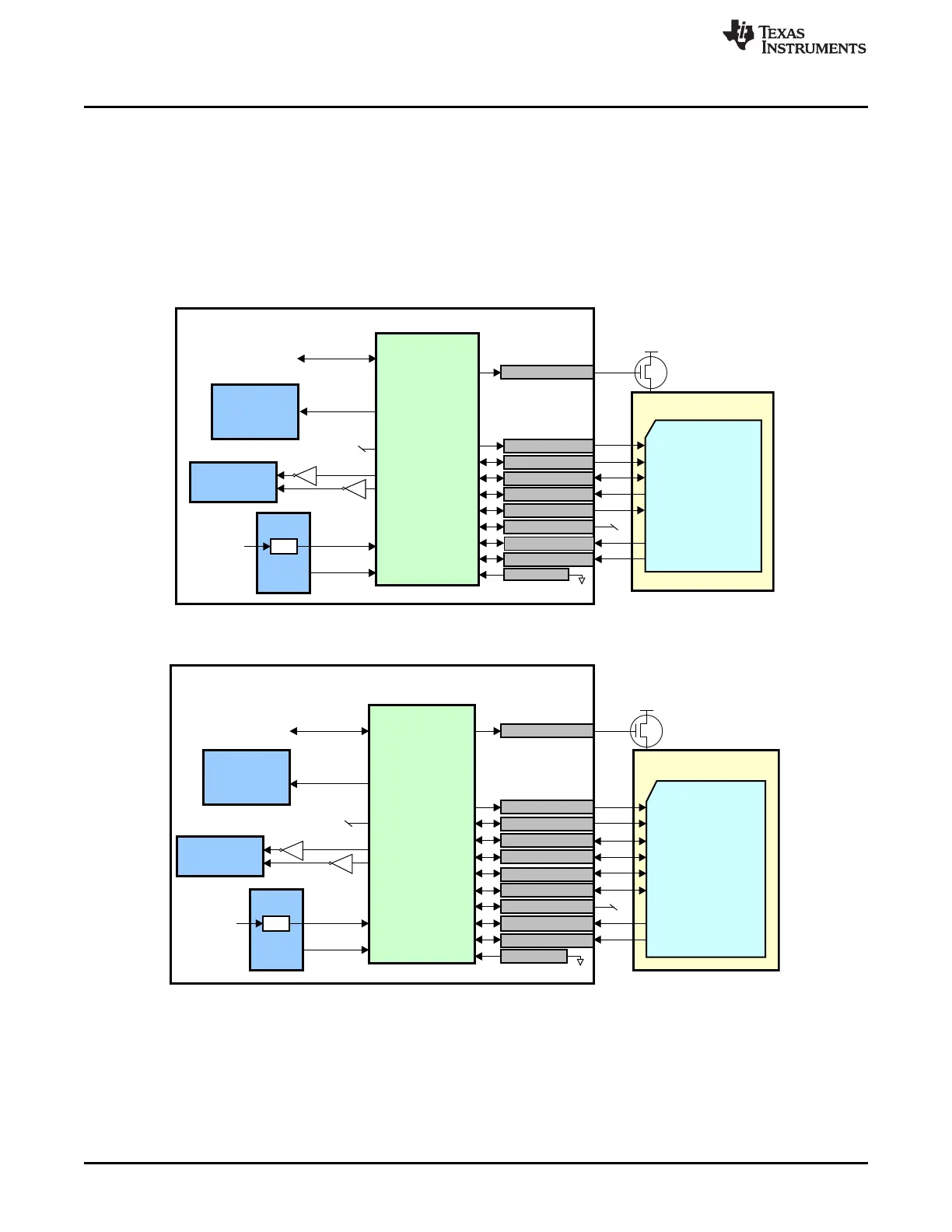SD Card
(4 bit)
MMC/SD I/F
Pads
MMC_CLK
MMC_CMD
MMC_DAT0
MMC_DAT1
MMC_DAT2
MMC_DAT[7:4]
MMC_POW
CLK
DATA0
DATA1
DATA2
CD
MMC_SDCD
MMC_SDWP
WP
MMC_OBI
Connector VDD Plane
+V
Power Switch
CMD
MMC_DAT3
DATA3/CD
MMCHS
Controller
L4 Peripheral
Interconnect
MPU
Subsystem
EDMA
SINTERRUPTN
SDMARREQN
SDMAWREQN
CLKADPI
SWAKEUP
CLK32K
PER_CLKOUTM2
(192 MHZ)
PRCM
/2
CLK_32KHZ
MMCHS
Controller
SDIO Card
(1 bit)
SINTERRUPTN
SDMARREQN
SDMAWREQN
CLKADPI
SWAKEUP
MMC_CLK
MMC_CMD
MMC_DAT0
MMC_DAT1
MMC_DAT2
MMC_DAT[7:3]
CLK
DATA
IRQ
W/R
CD
MMC_SDCD
MMC_SDWP
WP
MMC_OBI
Connector VDD Plane
CLK32K
CMD
L4 Peripheral
Interconnect
MPU
Subsystem
EDMA
PER_CLKOUTM2
(192 MHZ)
PRCM
/2
CLK_32KHZ
MMC/SD I/F
Pads
MMC_POW
+V
Power Switch
MMC_CLK
Integration
www.ti.com
18.2 Integration
This device contains three instances of the Multimedia Card (MMC), Secure Digital (SD), and Secure
Digital I/O (SDIO) high speed interface module (MMCHS). The controller provides an interface to an MMC,
SD memory card or SDIO card.
The application interface is responsible for managing transaction semantics; the MMC/SDIO host
controller deals with MMC/SDIO protocol at transmission level, packing data, adding CRC, start/end bit
and checking for syntactical correctness. Figure 18-1 through Figure 18-3 below show examples of
systems using the MMCHS controller. Note that the power switch control is only available on the
MMCHS0 interface.
Figure 18-1. MMCHS Module SDIO Application
Figure 18-2. MMCHS SD (4-bit) Card Application
3346
Multimedia Card (MMC) SPRUH73H–October 2011–Revised April 2013
Submit Documentation Feedback
Copyright © 2011–2013, Texas Instruments Incorporated
